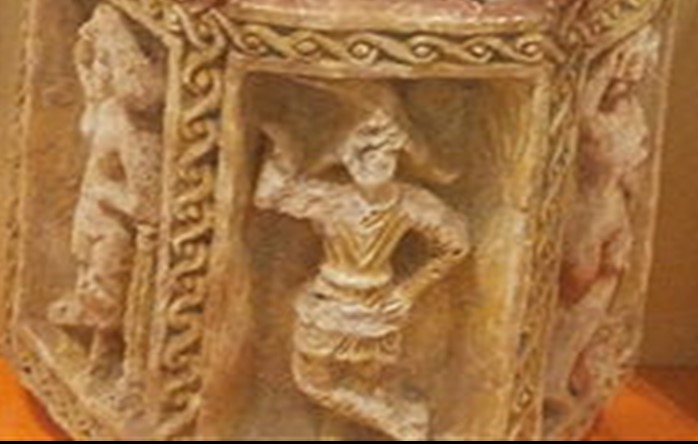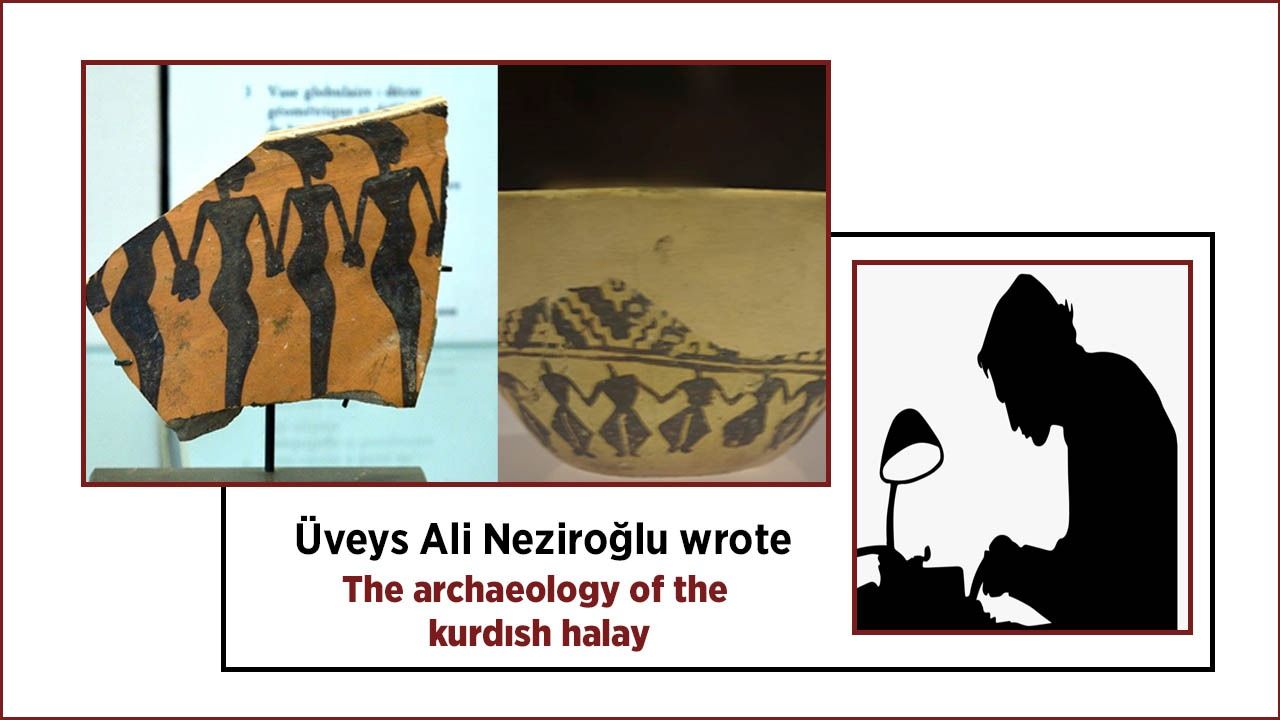Halay is not a matter that can be explained by a temporary ministerial decree for the Kurds of the Zagros and the Kurds who belong to these mountains, but has a historical and identity-related meaning.
If we look at the saying "The gypsy plays, the Kurd dances"," which has been politically distorted by removing its emotional value context, from an archaeological rather than a sociological perspective, it becomes clear that Kurds have been dancing the halay for a long time. This dance has a history as old as history itself. However, the political power that does not care about the details of the art of dance is busy staging its own game, looking for criminal realities rather than music and dance in the alter ego of this phenomenon.
Before I go into the ancient journey of halay, which has been enriched by the Kurds into a rich literature with dozens, even hundreds of names, I would like you to look at the following pictures.
The first picture is a kiln vessel from the Chalcolithic period on display in the Tehran Museum of Antiquities. It dates from around 4800 BC and is a rare artefact found during excavations on the Xoda Nezer-i Çoxa Sebz mound in the Surî district of Rumeşkan county on the border between the Iranian provinces of Lorestan and Ilam. The picture on the pot shows seven dancers standing almost in a row. Their hands are intertwined, their arms are either straight or slightly bent, and their upper bodies are lined up like a single mass. Although there is a small space between them, their hips and knees are slightly bent, and as the arms move back and forth, it appears as if one foot is walking forwards and the other backwards. If you were to animate the image, you could see that the feet move more rhythmically and faster. The dancers' clothes are also very interesting, considering how old the pot is. If you show these clothes to any Iranian, they will most likely tell you that they resemble Şalvar-ı Kurdî, or Kurdish trousers. These are the same Kurdish trousers that Kurds, Azeris, Persians, Gilakis and Baluchis still wear comfortably in their homes or in their leisure time. The artefact showing such a distinctive garment was found at the foot of the Zagros Mountains.

Source: https://l24.im/GuWrMF9
The second image comes from the ancient city of Rey in Iran. It is a piece of clay pottery from around 5000 BC, which was found during excavations in the area of Ceşme-i Ali. This rare artefact, which is on display at the Louvre Museum in France, also features dancers, who are women. The place where these dancers are exhibited is the same place where they were found, namely at the foot of the Zagros Mountains.

Source: https://l24.im/Z4uG
The ancient city of Rey is located in the Cibâl region, which gave its name to the western part of Iran. Cibâl means "mountainous region" in Arabic, and this name was given because of the Zagros Mountains. Ibn Havkal shows a map of Cibâl in his work "Süretü’l Arz" (The Shape of the Earth). Cibâl is a region with settlements such as Hulvân (Hewreman), Erbil, Şehrezor in the north, Suhreverd, Kasr-ı Şirin, Kermisin (Kirmanşah), Dinever, Hemedan in the central region, Nihavend and Burucerd in the east, Lûr/Loristan and Masebezân in the south and Kazvin and Rey in the north-east, including Mount Demavend. The early Arab historians called this region Mahü’l-Kûfe. However, the "mâh" in this name refers to Medya, the ancient name of Cibâl or the land of the Medes. Despite the different names given to the region over time, the name Zagros has remained unchanged.
The third image comes from the Zarde Plateau in the Zagros Mountains, more precisely from the area of Tepe-i Reş within the borders of Kurdistan. It is a carved column drum from the Parthian/Arsakid period, which was found in the Kale-yi Yezdgird mound. It is located 12 kilometres from Delahu, a region known for its collective tanbur performances. This rare artefact, discovered in 1963 by British archaeologist Edward Keall, is on display at the Royal Ontario Museum in Toronto, Canada, and is around 2000 years old. The carving depicts a dancer wearing an Arsacid tunic and a headdress. He is standing with one hand on his waist, his right foot is bent at the left knee and his right hand is raised. This figure resembles a Halay leader.

Source: https://l24.im/zqgu
All three of the above artefacts were found in the eastern Zagros Mountains, which were part of the vast region of Cibâl known as Media. While such artefacts are unearthed in the eastern part of the ancestral homeland of the Kurds in the Zagros Mountains, the Halay of the Kurds is politicised in the western part of the Zagros Mountains. While the ancient dances of various peoples have prehistoric roots, the halay has a historical and identity-forming significance for the Kurds and the people of Zagros that goes beyond mere history. Therefore, if a political power could displace the Zagros Mountains from its place, it would also be able to erase the memory of the Kurdish halay.


